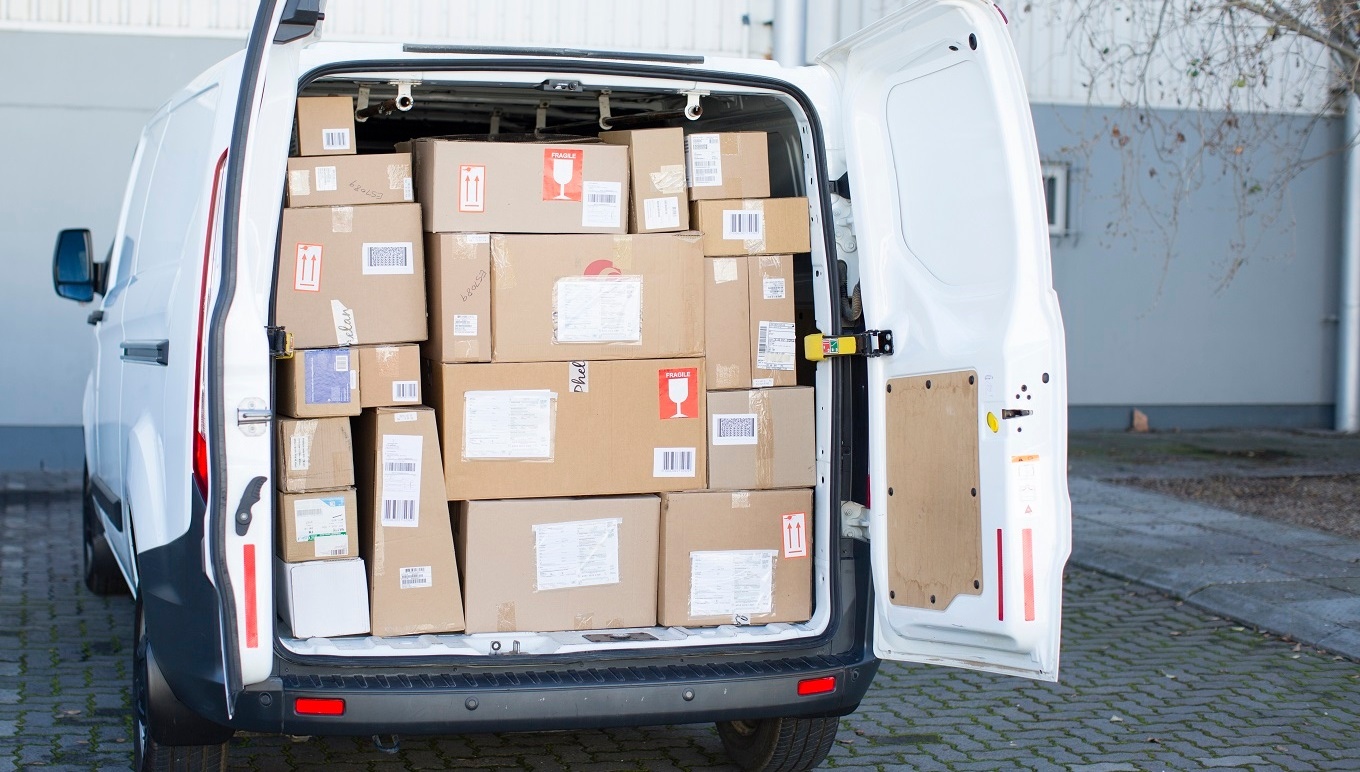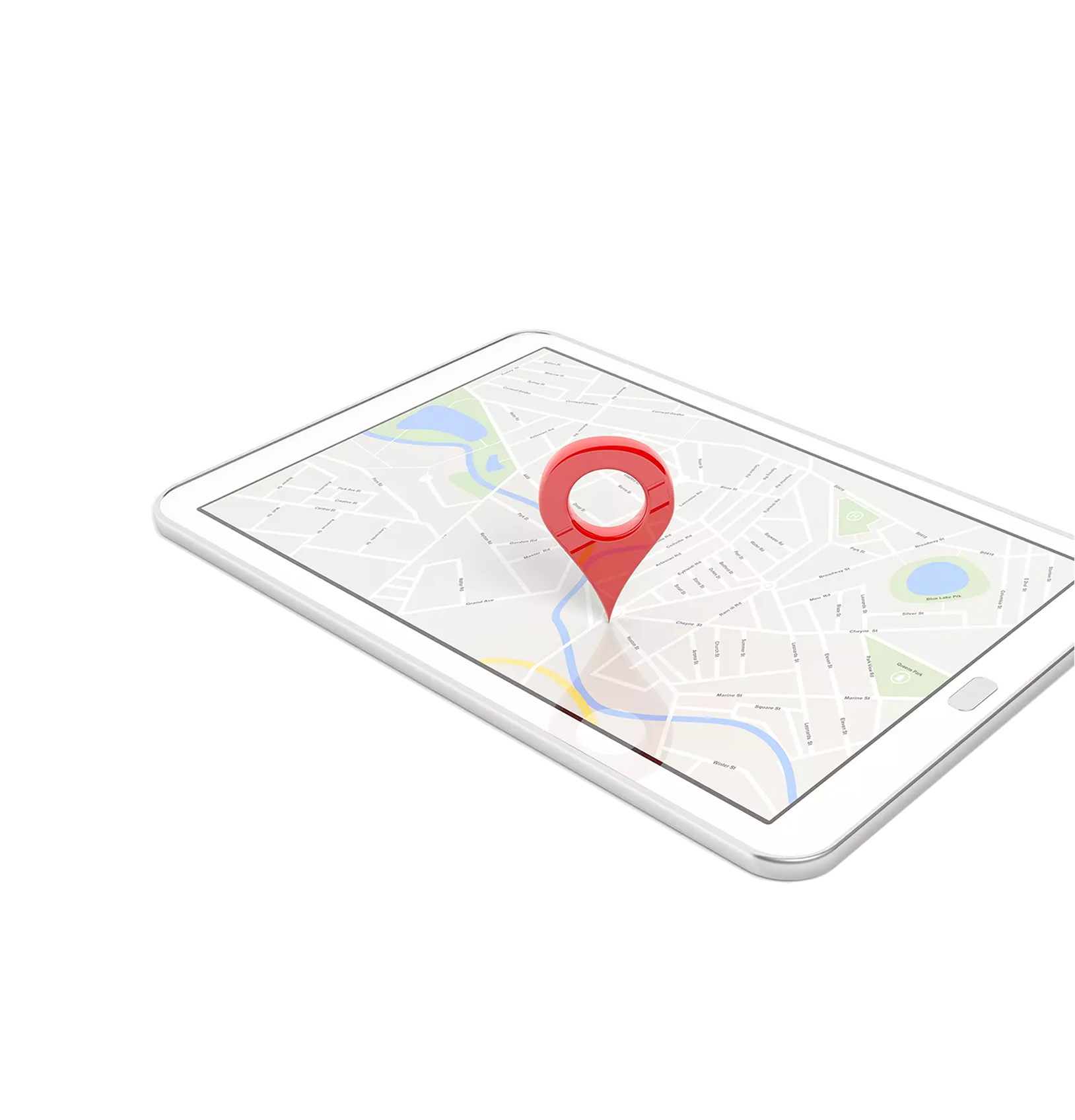In diesem Beitrag vorgestellt
Do You Need Business Route Planning Software? Here's How You Can Tell
Do You Need Business Route Planning Software? Here's How You Can Tell
9 Juli 2025
 Jim Endres | Regional Account Director
Jim Endres | Regional Account DirectorBlog-Beitrag
Essential Takeaways At-A-Glance
If you’re questioning whether your business needs route planning software, here are the signs to watch for—plus what the right system can do about them:
Customers are frustrated with late or unclear deliveries—Software optimizes routes and provides accurate ETAs.
Drivers complain about long hours, unfair routes, or low morale—Automated planning balances schedules and improves satisfaction.
You lack visibility into delivery costs and margins—Real-time data shows true cost-to-serve and profitability.
Transportation expenses are climbing due to inefficiency—Smarter routing reduces miles, fuel use and wasted trips.
Route planning takes too long or can’t adapt to changes—Automation builds and adjusts routes in minutes.
Different depots use inconsistent planning methods—Centralized software standardizes best practices across locations.
Your current tools can’t keep up with growth or complexity—Scalable solutions handle advanced rules and expansion seamlessly.

The explosion of ecommerce, increasing customer expectations in B2B and growing delivery demands across nearly every industry mean that your business is faced with new pressures every day. The big question is: do you have the right tools to keep up, or are you seeing the telltale signs that you’ve outgrown your current way of route planning?
We get it—contemplating new technology implementations or process changes is a lot on top of your busy day to day. But with rising delivery volumes, growing customer expectations and shrinking delivery windows, if you’re still relying on spreadsheets, Google Maps or basic routing tools, you’re holding your company back. And making your employees’ jobs harder at the same time.
Some companies try adding more trucks or drivers to ease growing pains, but in reality, that’s a short-term fix—and rarely a profitable one. Without a smarter way to maximize existing resources, you’re just adding cost and complexity. That’s why the answer isn’t more, it’s better. So when you do need to scale—whether it’s a new truck, depot or customer contract—you’ll know it’s the most efficient and profitable move.
How do you achieve this optimization? Business route planning software—it's designed to maximize resource usage, reduce transportation costs and enable better strategic planning, boosting growth instead of stunting it.
If you’re wondering whether it’s time to make the upgrade, we’ve compiled a list of the most obvious signs that your delivery operations are outpacing your routing capabilities. And if you still have questions, check out our comprehensive route planning software guide.
Let’s discover what’s holding you back—and how business route planning software can make all the difference.
1. You’re Not Meeting Customer Expectations
It’s no longer just about delivering on time—it’s about delivering on your customers’ terms. The rise of Amazon has reshaped what people expect from delivery services, in retail and beyond. Whether you’re running B2B shipments or consumer-facing logistics, your customers expect speed, precision and visibility. And if you fall short, the consequences can range from poor reviews to lost contracts. That puts intense pressure on your planning and dispatch teams to do more, with less.
Here’s what unmet expectations look like today:
Clients ask for early morning or late evening deliveries—but your current routes can’t accommodate them.
You can’t offer later order cut-offs because you need time to complete manual planning.
Customers call asking, “Where’s my order?”—and your team scrambles for answers.
Negative reviews roll in when you miss narrow delivery windows.
Competitors are offering 2-hour time slots while you’re stuck with vague ETAs.
If these pain points sound familiar, your current tools—whether it's Google Maps or spreadsheets—just aren't cutting it. You need to offer flexible scheduling, tighter time windows and real-time updates to keep today’s customers loyal. But manual and basic planning eats into hours you don’t have. And without automation, you can’t scale your service to meet growing demand without sacrificing quality.
That's where business route planning software comes in. With intelligent routing and scheduling capabilities, you can optimize multi-stop routes in minutes, extend your cut-off times and deliver exactly when your customers want you to. You’ll keep contracts secure, improve customer satisfaction and free your team from hours of reactive firefighting—regardless of your business setup.
2. Your Drivers Are Dissatisfied
It’s no secret that we are in a worldwide shortage of qualified truck drivers. Good drivers are leaving their current jobs, lured by the promise of higher salaries and large signing bonuses. You care about your drivers and you want to give them equitable, feasible shifts that end on time. You want to keep your drivers and you want them to enjoy working for you. But if you’re hearing complaints from even your veteran drivers, it’s time to look at how efficient your current operation really is.
When you plan your routes manually, several issues can arise.
Drivers are constantly working overtime because of unplanned delays.
Drivers often complain about favoritism.
You’re doing things the way you’ve always done them, without considering drivers' skills or preferences.
Your planning time often takes longer than running the actual routes.
Unfortunately, if you’re still using manual planning processes or basic software that cannot account for driver attributes, these issues might never get resolved. Your drivers will remain frustrated due to inconsistent schedules, your trucks will continue running under capacity and you’ll still miss deliveries due to Hours of Service (HOS) restrictions or unexpected delays.
The best business route planning software ensures you make the most of your current resources by optimizing delivery schedules, vehicle capacity and driver utilization. It also helps create more balanced, predictable workloads that respect your drivers’ time and preferences. When drivers know they’re on fair, well-planned routes that allow them to finish on time, it increases job satisfaction—and that kind of consistency builds long-term loyalty.
3. You Can’t Calculate Cost-to-Serve or Model Business Changes
Suppose someone on your team asks, “Customer XYZ wants to add two more weekly deliveries—can we handle it profitably?” If you’re stuck guessing or scrambling through spreadsheets, that’s a red flag. Without visibility into your true operating costs, every new opportunity could quietly drain your margins. Basic tools like Google Maps or Waze might help you map a route, but they can’t help you forecast profitability or cost-to-serve—at least not with any accuracy.
Here’s what you’re likely missing without advanced business route planning software:
Real-time cost-to-serve visibility: Know exactly what it costs to serve each customer, per route, per mile.
Decision-making clarity: Understand instantly if changes—like extra deliveries, new clients or changing driver shifts—will improve or hurt profitability.
Avoidance of unnecessary spending: Identify whether you truly need to add trucks or just plan smarter.
Data-backed key performance indicators (KPIs): Track metrics like cost per drop, cost per mile and delivery efficiency in one place.
Saying yes to new business shouldn’t feel like rolling the dice. Commercial route planning software helps you break free from guesswork by calculating your cost-to-serve easily. Instead of retroactively analyzing spreadsheets (or worse, winging it), you can confidently say “yes” or “not yet,” backed by real insight into your margins.
What’s more, this strategic planning functionality goes beyond cost-to-serve. When you use advanced routing and scheduling software, you can simulate a range of business scenarios before committing, not just adding new customers or deliveries. Thinking of expanding into a new region? Testing a different delivery schedule? Changing driver shift patterns? You’ll know what the cost curve looks like before making a move—no surprises, just smart scaling.
4. Your Costs Are Simply Too High
Let’s face it—logistics is a margin game. And if your team is constantly fighting high fuel costs, driver overtime or idle trucks, your profit is leaking from multiple directions. Manual planning and basic tools can’t optimize the hundreds of decisions that impact your daily costs. But commercial route planning software has sophisticated algorithms, enhanced by machine learning capabilities, to compute hundreds of variables—helping you find the waste you’ve stopped seeing and replace it with savings you can measure.
Here are a few cost-related pain points that route planning software helps solve:
You’re running extra routes because your current tools can’t consolidate deliveries effectively, driving up per-delivery costs.
Manual planning leads to inefficient sequences, increasing unnecessary mileage and fuel costs.
As your team can’t predict traffic patterns or delays, your drivers often end up in overtime.
Inaccurate ETAs from manual planning often lead to missing tight delivery windows and you end up paying rescheduling fees.
You have a high number of empty miles without effective multi-depot planning to schedule backhauls.
In short, inefficiencies pile up fast—and they cost you. Without optimization, you’re likely running too many routes, burning extra fuel, overextending your team and putting your service reputation at risk. Higher cost-per-delivery is just the beginning; over time, it chips away at your competitive edge.
The good news is, this is a fixable problem. With an advanced route optimization solution, you can reduce logistics costs within months of implementation. It helps you do more with less—fewer trucks, fewer miles and fewer headaches—while improving service at the same time.
5. Route Planning Takes Too Long
If your team spends hours each day manually mapping out delivery routes, it’s a clear sign that it’s time to upgrade your system. Route planning that drags on too long doesn’t just eat into your planners’ time—it delays order cut-off times, hampers responsiveness and limits your ability to handle last-minute changes. Even with experienced planners, trying to juggle time windows, delivery zones and service levels using spreadsheets or entry-level tools can quickly become overwhelming.
Here’s where the cracks usually show up:
You’re delaying order cut-off times because routes can’t be finalized fast enough.
Your planners are overwhelmed by complex customer requirements like time windows, delivery zones or tiered service levels.
Basic tools (or your trusted spreadsheet) just can’t juggle these moving parts.
Any disruption—like a late vehicle or urgent new request—triggers a full replan from scratch.
Planners don’t have time for higher-value or strategic tasks.
When route planning becomes a bottleneck, it holds back your entire operation. You miss out on agility and customers feel it in slower service and missed expectations. That’s why many organizations like yours are moving to advanced business route planning software that handles complexity in minutes. With smarter routing tools, planners can shift from hours of tedious, manual work to hitting a few buttons—so your entire delivery process is more efficient and resilient.
Even better, route planning software that includes route execution capabilities allows your team to re-optimize quickly when plans change—whether that's due to traffic delays, last-minute orders or cancellations. That means smoother operations, happier customers and more agility without stress. When you spend less time scrambling to fix plans, you can focus more on scaling your delivery network, not just surviving it.
6. There’s No Standardization Across Depots
When each of your depots or regional planners is using their own system—whether it's spreadsheets, whiteboards or free mapping tools—you’re asking for inefficiency. Without a standard process for routing and scheduling, you end up with fragmented planning, knowledge silos and inconsistent delivery experiences. And that’s not just frustrating internally; it hurts your customers, too.
Here’s what non-standardized routing really looks like:
Every depot has its own “best practice”—which means there is no best practice.
Some planners prioritize cost-efficiency, others just focus on getting deliveries out the door and some show preferential treatment for certain customer or driver preferences.
Customer service fluctuates by region, depending on how routes are built, affecting your reputation and customer loyalty.
Lessons learned at one location don’t get shared across the business.
Driver retention rates and levels of satisfaction differ across the company.
That lack of consistency makes it nearly impossible to optimize at scale. You miss out on the benefits of optimized route planning—like cross-depot load balancing, backhaul efficiency and global visibility into KPIs. What’s more, your customer experience becomes a roll of the dice. You can't guarantee reliable service or delivery windows when your planning logic changes by location.
The solution? Invest in commercial route planning software that supports centralized oversight and multi-depot coordination. In particular, look for a system that allows you to view your entire fleet as one integrated resource. That way, you standardize what’s working across every depot—without sacrificing local flexibility. And, with planning centralized, you can redeploy some of your planning resources to engage in strategic activities.
7. You’re Stuck With Tools That Can’t Scale
When your business is growing—more routes, more customers, tighter delivery windows—your routing challenges multiply as well. The same spreadsheet or entry-level tool that worked fine when you had five drivers and a handful of stops quickly becomes a barrier to growth and a dead weight on your margins. In short: what got you here won’t get you there.
Here’s how limited tools can hold your growth back:
They can’t handle complex delivery rules like driver preferences, shift restrictions or customer-specific time windows
There’s no room for strategic planning like modeling new depots or assessing the impact of new customer contracts
Multi-stop route optimization is either too manual or entirely missing, leading to longer routes and fewer deliveries per day
No modularity or flexibility—you’re stuck with what’s in the box, even if your needs change or expand
There’s limited support for technical issues and no experts on your corner to advise on best practices or lessons learned from similar companies
This is why you need to invest in advanced route planning software. It gives you the ability to scale operations efficiently with highly configurable settings and smart automation. You can define rules based on your delivery patterns, set custom constraints and even add functionality—like an electronic proof of delivery (ePOD) system or route execution and tracking—when you're ready.
What does this all mean for you? It means you can continue growing without sacrificing performance. You’ll be able to plan faster, scale smarter and deliver consistently—even as your delivery network becomes more complex. And, with the right vendor, you’ll have an experienced team by your side to ensure you’re getting the most from the software as your business evolves. In the end, it’s not just about keeping up. It’s about choosing a routing system that grows with you, not against you.
Ready To Leave Inefficient Routing Behind?
If you’re still relying on Google Maps, spreadsheets or entry-level tools to run your logistics operation, it’s time to ask: how much is that really costing your organization? The answer is likely “too much”.
Instead, business route planning software streamlines your operations and delivers measurable improvements in efficiency and cost control. By optimizing delivery routes, reducing fuel costs and improving service levels, an enterprise solution unlocks measurable cost savings and efficiency gains. In fact, organizations introducing route optimization software often see fleet operating costs drop by 10–30%, with ROI achieved in as little as three months.
But these benefits go far beyond daily efficiencies. With Aptean Routing & Scheduling, you're investing in a solution built to handle the complexity of modern delivery operations—whether you're managing high-volume home delivery, navigating variable time windows or running multi-stop routes across multiple depots. Our software offers real-time visibility, strategic scalability and seamless integration with broader TMS capabilities like proof of delivery and route execution. To unlock even greater value, our AI-powered end-to-end platform, AppCentral, brings all your logistics solutions together with native integrations across ERP, WMS and more.
That’s what we deliver. We combine industry-leading technology with deep logistics expertise to provide solutions tailored to your business. And we back it up with personalized support—from initial consultation, to implementation, optimization and beyond.
Don't take our word for it. Read the following success stories from actual customers:
Martin Brower Keeps the Burgers Rolling in the USA with Aptean Routing & Scheduling
Aptean Routing & Scheduling Software Helps Tesco Cut Carbon Emissions
Want to see what route optimization could look like for your team? Take a self-led product tour or contact us to schedule a personalized demo now.
Sind Sie bereit, Ihr Unternehmen grundlegend zu verändern?
Buchen Sie eine Demo zu einem Zeitpunkt, der Ihnen passt, und entdecken Sie, wie Sie Ihren Logistikbetrieb schlanker gestalten können - mit weniger Überraschungen und mehr Kontrolle.



